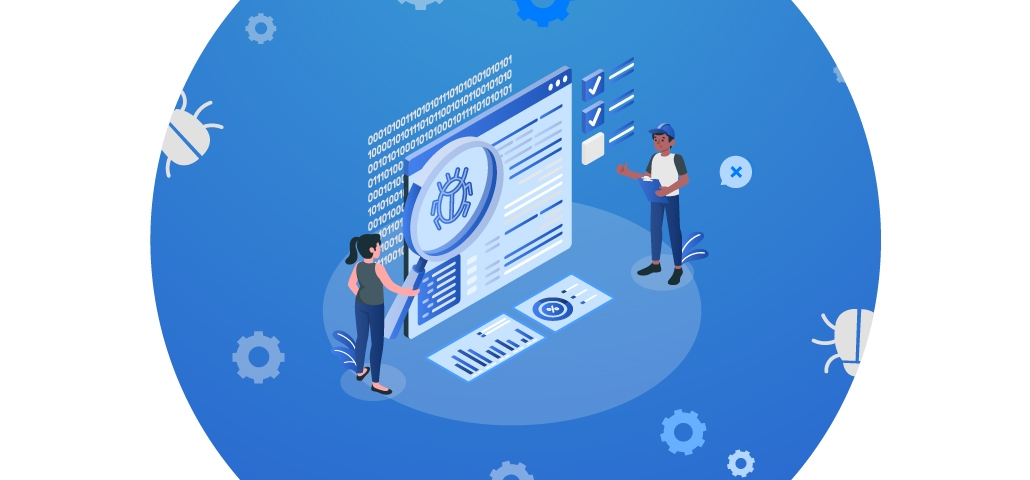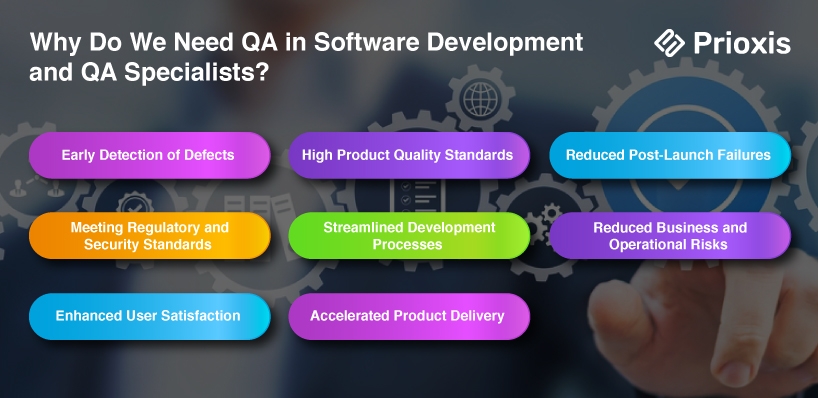
Table of Content
When you buy a car, it’s easy to notice the design, the color, and how comfortable it feels inside. But it’s only when you take it for a drive that you’ll truly know if it performs well. Even a car that looks great can have hidden problems under the hood.
The same goes for almost any product, whether it’s something physical or digital. An app might seem perfect when you first download it, but as you start using it, you could come across bugs or design issues that weren’t obvious at first.
That’s why, At Prioxis, quality is embedded into every aspect of our development process. In this guide, we’ll share how we approach quality assurance, the best practices we follow, and the strategies we use to ensure reliable and high-performing software.
Software testing and Quality Assurance (QA) helps you catch errors, bugs, and performance issues before your users do, ensuring the software is reliable and meets your business needs.
Quality Assurance(QA) is not just limited to finding bugs, but to identifying the overall quality of the web app. It validates that the final product not only works but works exactly as intended. It’s about delivering software that’s functional, reliable, and secure. Whether it’s a healthcare app managing sensitive patient data or a banking system handling millions of transactions, even the smallest flaw can lead to major consequences.

Because QA helps in delivering reliable, bug-free software and improving user experience. Early detection of defects leads to high product quality standards, reducing post-launch failures, meeting regulatory and security standards, streamlining development processes, reducing business and operational risks, enhancing user satisfaction, and accelerating product delivery.
Quality Assurance isn’t just a box to tick; it’s what makes sure your software doesn’t fail users. Imagine launching a new app or platform only to have it crash or perform poorly, users won’t be happy, and it can hurt your business. QA helps to avoid this by identifying issues early on. Here’s how it benefits you:
QA specialists bring a level of expertise that’s hard to achieve without them. They know how to look for issues that developers might miss, test in real-world scenarios, and suggest improvements. Their role is essential because they:
Many people think QA should start at the end of the development cycle, but that’s a mistake. QA should kick off as early as the planning stage. Here’s why:
By starting QA early, you’re making sure issues don’t pile up, helping the dedicated development team move faster and more efficiently.
In modern development methods like Agile or DevOps, testing is a continuous process. Instead of testing just at the end, QA is integrated into every sprint, making sure that features are tested as they’re built. This ensures that the product remains stable and performs well as new features are added.
When to Say, “QA is Done”? Stopping QA at the right time is a tricky-complex decision. You don’t want to stop too early and miss critical bugs, but you also don’t want to spend forever testing. So, how do you know when to stop?
At some point, further testing may not provide any significant benefits, so it’s important to find that balance between quality and timelines.
There are several ways to test software, each focusing on a different part of the system. Let’s look at the most important ones:
This method focuses on testing individual components or "units" to verify they function as expected. Developers usually handle this during the coding phase.
When dealing with a payment gateway, unit testing can validate that individual functions like transaction fee calculation or credit card validation are working correctly before integrating them into the full system.
Integration testing is to make different parts of the software work together smoothly. This is particularly significant in projects where multiple teams are responsible for separate components.
In a healthcare application, integration testing can verify that APIs linking patient records with billing systems work seamlessly, preventing any data inconsistencies or sync issues between modules developed by separate teams.
System testing assesses the entire software system to ensure that everything functions properly as a whole. This is typically the last test before release.
For an eCommerce platform, system testing can verify that core functions like browsing, checkout, and order tracking are working together across devices, helping minimize the risk of failures after launch.
UAT is where real users or clients test the software to confirm that it meets their needs and behaves as expected in real-world conditions.
In an ERP system, HR and finance teams can perform UAT to ensure the software supports their specific workflows, offering a final validation step before full deployment.
Performance testing evaluates how well software handles load and stress, ensuring that it doesn’t slow down or crash under heavy usage.
A trading platform can be stress-tested to simulate high traffic, ensuring it performs efficiently during peak market hours without performance drops or crashes.
Security testing identifies vulnerabilities in software, safeguarding sensitive data against potential breaches.
Mobile banking applications benefit from security testing to uncover vulnerabilities that could lead to unauthorized access or data leaks, ensuring robust protection of user information.
Regression testing ensures that new updates or features don’t break existing functionality, maintaining the software’s overall stability after changes are made.
After implementing new features in an ERP system, regression testing checks that existing processes like inventory management or payroll remain unaffected, helping maintain system integrity after updates.
Manual testing is performed by human testers, while automated testing runs predefined scripts to test the software. Both methods have advantages, manual testing is ideal for finding usability issues, while automation is faster for tasks like regression testing.
In a large eCommerce project, a mix of manual and automated testing can be used for automating repetitive tasks like checkout tests, while manual testing evaluates user experience. This helps maintain functionality and ensures the software is user-friendly.
For effective QA process in software testing, the QA process typically follows a set of stages. Here’s a breakdown:
This is where the QA team reviews the project’s requirements to understand what needs testing. This sets the foundation for the entire testing process.
The next step is creating a plan that outlines the testing scope, tools, resources, and timelines. This makes sure everyone is on the same page about what needs to be done.
In this phase, test cases are created based on the software’s functionality. This helps testers know what to look for when testing specific features.
Now the real testing begins. QA teams run the test cases, document any bugs or issues, and work with the development team to fix them.
Bugs are logged and tracked throughout the development process. QA teams prioritize these defects and make sure they’re fixed before release.
Once testing is complete, the team prepares a report summarizing what was tested, the issues found, and any areas that still need improvement.
Finally, after all key issues are resolved and testing objectives are met, the QA process comes to a close. This includes a wrap-up meeting to review what went well and what could be improved for future projects.
Software testing and QA are critical to delivering a reliable, high-performing product that users love. QA makes sure that every feature and functionality work as intended, providing a seamless and reliable user experience. From early-stage planning to ongoing testing in Agile and DevOps environments, QA in software testing plays a vital role in detecting and resolving issues before they become costly problems.
At Prioxis, we treat QA as a continuous, integrated process. By starting QA early and maintaining it throughout development, we ensure that every component of your software is tested thoroughly—from individual units to system-wide functionality. Whether it’s performance engineering for heavy traffic or security testing to safeguard sensitive data, we focus on delivering software that meets the highest quality standards.
In the end, QA is about building trust with your users by ensuring your software is stable, secure, and ready to perform in the real world. With Prioxis by your side, you can be confident that your software will not only meet expectations but exceed them.
Get in touch